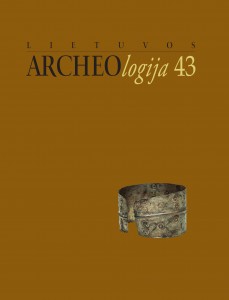Brothers-in-arms. Balt warriors and their interregional contacts in the Roman and Migration periods (the case of the Bogaczewo and Sudovian cultures)
Brothers-in-arms. Balt warriors and their interregional contacts in the Roman and Migration periods (the case of the Bogaczewo and Sudovian cultures)
Author(s): Bartosz KontnySubject(s): Archaeology, Ancient World, Migration Studies
Published by: Lietuvos istorijos institutas
Keywords: weapons; the Western Balt circle; the Roman period; the Migration period; bog sites;
Summary/Abstract: This paper is the first attempt to summarize the state of research into the armament of the Bogaczewo and Sudovian cultures. Swords ended up with a higher than expected position. While shaft-hole axes and socketed axes played an important part, the military role of the so-called ‘fighting knives’ of the Roman period was rejected, with the exception of Dolchmesser, which were recognized as true weapons. Polearms and shields were used the most frequently. The latter, although fitting into the Central European pattern, had local traits. The bow was recognized as hunting equipment. And horses had a rather auxiliary character. Items with a Balt character that were discovered, for example, at Vimose Bog 1 and 2a and the sacrificial sites at Balsmyr, Sorte Muld, Kragehul, Skedemosse, and Uppåkra seem to prove that Balts participated in Scandinavian conflicts, which led to an exchange of ideas about such things as tactics and weapons.
Journal: Lietuvos archeologija
- Issue Year: 2017
- Issue No: 43
- Page Range: 11-62
- Page Count: 52
- Language: English

